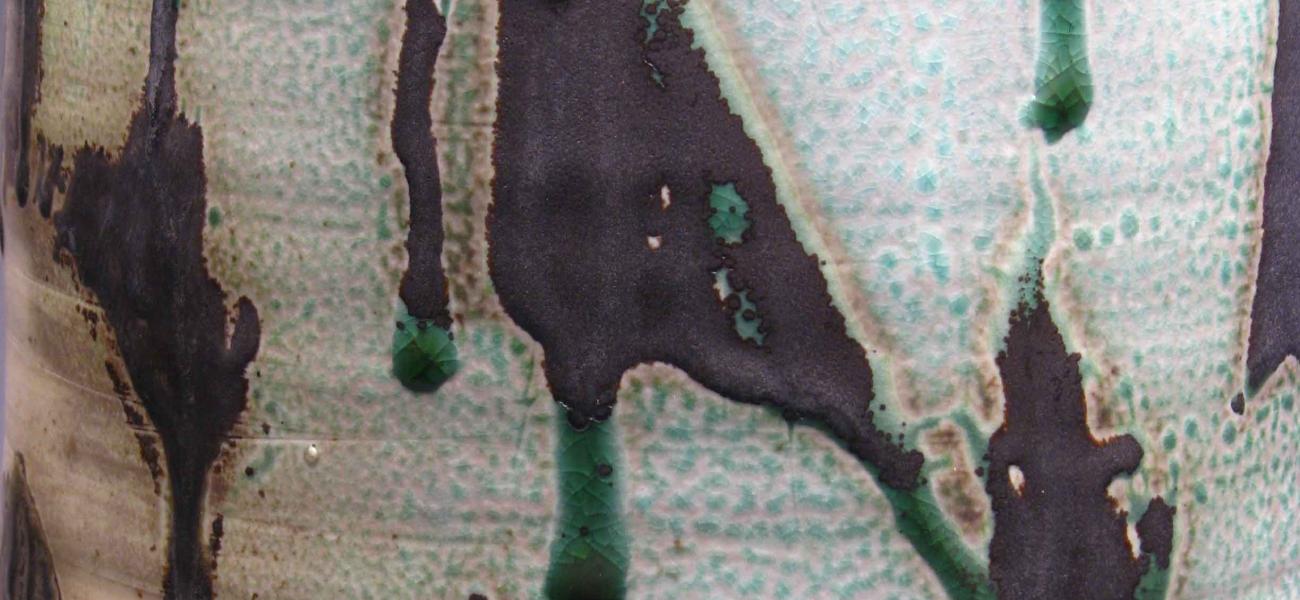As a studio potter, I frequently complete upward of 400 glaze tests. The majority begin with the unity molecular formula and build outward as I see the results. My friends have asked, “Why do you test so much?” or “What are you looking for?” I have pondered these questions as I surround myself further with boxes full of test tiles. What is it that draws me to a surface or a glaze?
When I was younger, I had aspirations of being a painter and marveled at the works of de Kooning, Kandinsky, and Rothko. In high school I tried to understand and emulate their use of color and composition in my paintings. It was not until recently that I felt that I had the ability to personalize these elements to my functional ceramic work.
During my undergraduate studies, I wood-fired my work and focused on form, technique, and history. By the time my senior year came around, I felt the need for more color. I was already learning to paint with fire, but I wanted to bring more life to my earth-toned palette. During grad school I begrudgingly left behind my beloved wood-kiln firings and moved on to soda-firing. My first soda-fired pots sang the same earthy tones as my wood-fired pieces. In an introductory course on glaze chemistry, I began to test glazes and develop an understanding of what to expect from each incremental variation of a glaze component. At that point, I began to find my voice. I was dipping my toes into a whole new pool of knowledge and relearning how to swim.
I have been one of those students wishing to fall right into a style, find a voice, and skip the struggle. Anyone who has traveled this path, however, will tell you that these are things you have to work at and that you will feel more satisfaction afterward for having made the journey. As an undergraduate, I had spent my time looking up and around me but not enough time contemplating. Perhaps my teachers should have encouraged more introspection? To help shed light on my pathway, I made a pilgrimage to Arrowmont School of Art and Craft for a weeklong workshop with Deborah Schwarzkopf. I came back to grad school with a new perspective. With my vision freshly aligned, I homed in on a new starting point, and I was ready to achieve my aim at all costs.
I focused on how I grew up – the son of an architect (my father) and potter (my mother). I evaluated how people build, organize, and structure spaces and what happens to these as they age and are used. I became fascinated with trodden entryways and public spaces and researched glazes that evoked worn paint and weathered concrete. In the glaze chemistry class, I explored and altered these surfaces until I had two that I liked. I wrapped my hands around one glaze and one wash and held on. I moved forward slowly and built my small library of surfaces on these two foundations. Each glaze addition was a new piece of my vocabulary and a stepping-stone forward.

